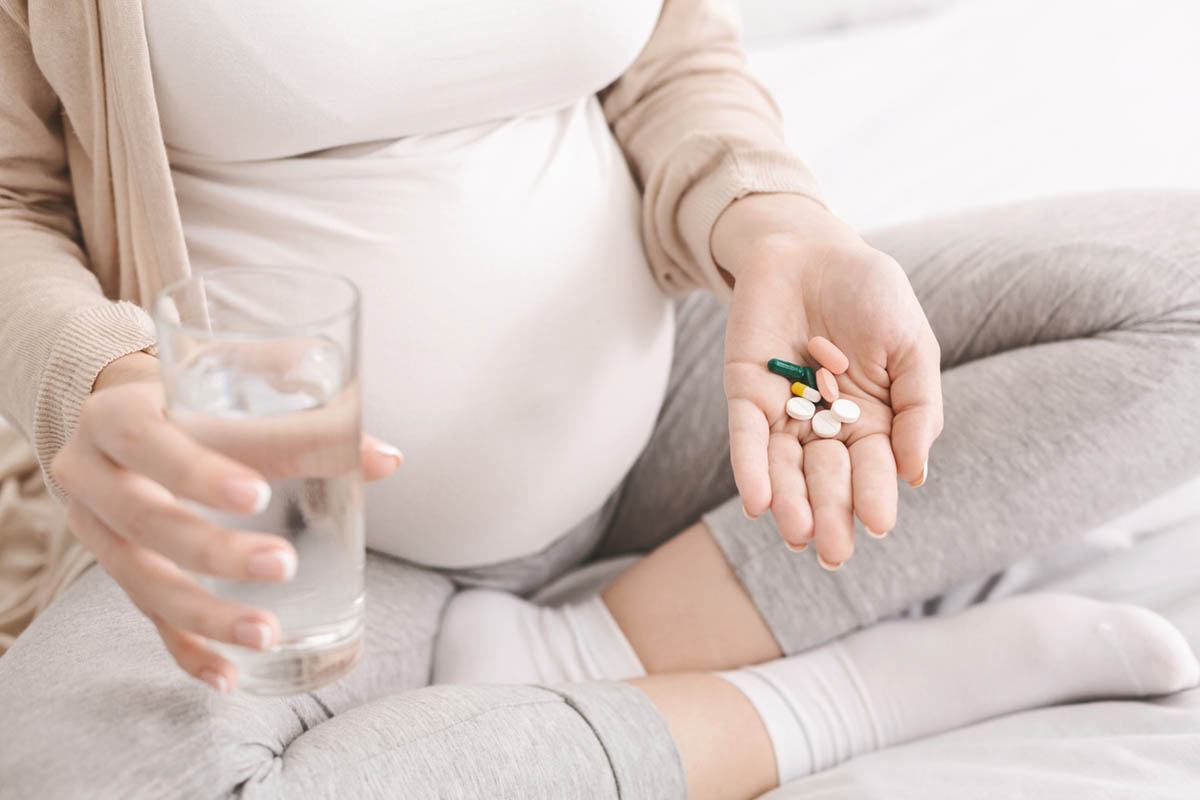J Clin Psychiatry 2022;83(6):22com14573
To cite: Pearlstein T. Bipolar disorder and premenstrual dysphoric disorder: comorbidity conundrum. J Clin Psychiatry. 2022;83(6):22com14573.
To share: https://doi.org/10.4088/JCP.22com14573
© 2022 Physicians Postgraduate Press, Inc.
aDepartment of Psychiatry and Human Behavior, The Warren Alpert Medical School, Brown University, Providence, Rhode Island
*Corresponding author: Teri Pearlstein, MD, Women’s Medicine Collaborative, 146 West River St, Providence, RI 02904 ([email protected]).
See article by Sharma et alSharma et al
The article “Relationship of Premenstrual Dysphoric Disorder With Bipolar Disorder: A Systematic Review” by Sharma and colleagues1 in this issue details the challenging issues involved with making a diagnosis of premenstrual dysphoric disorder (PMDD) in women with bipolar disorder (BD). The differentiation between the premenstrual exacerbation of an underlying disorder versus the comorbidity of PMDD with an underlying disorder (treated or untreated) is difficult for clinicians and patients.
Five observational studies met the authors’ criteria for inclusion in their systematic review; 1 was prospective,2 2 were cross-sectional,3,4 1 was a case-controlled study,5 and 1 was a retrospective cohort.6 The diagnosis of BD was determined in each study by structured clinical interview. The diagnosis of PMDD was ascertained by a semistructured interview of PMDD symptoms in 3 studies2–4 and by a self-report questionnaire of PMDD symptoms in 2 studies.5,6 The authors report that the proportion of women with BD who reported symptoms consistent with a PMDD diagnosis ranged from 27% to 76%. The proportion of women with PMDD with a diagnosis of BD ranged from 10% to 45%. One of the studies excluded subjects on oral contraceptives (OCs),5 1 of the studies reported that almost half of the subjects were taking OCs,2 and 3 of the 5 studies did not collect or report information about OC use.3,4,6 Two studies reported that women were taking psychotropic medications, but specific medications were not described,2,5 and 3 studies did not collect or report information about psychotropic medication use.3,4,6 One study enrolled euthymic women only5; the proportion of symptomatic women in the other 4 studies was not described.
Sharma and colleagues1 emphasize that PMDD as defined in each of the 5 studies is a provisional diagnosis since none of the women with PMDD had rated their symptoms prospectively for 2 menstrual cycles, which the DSM-5 requires for confirmation of a PMDD diagnosis.7 Retrospective reports of PMDD usually lead to its overestimation due the misattribution of premenstrually exacerbated symptoms of an underlying disorder as premenstrual syndrome (PMS) or PMDD. The DSM-5 PMDD criteria state that “the disturbance is not merely an exacerbation of the symptoms of another disorder.”7 The DSM-5 further states that PMDD “can be considered in addition to the diagnosis of another mental or physical disorder if the individual experiences symptoms and changes in level of functioning that are characteristic of PMDD and markedly different from the symptoms experienced as part of the ongoing disorder.”7 It is particularly difficult to differentiate PMDD and depressive disorders due to overlap of many of the symptoms of each disorder. There are fewer symptoms that overlap between PMDD and mania or hypomania, but irritability, mood swings, anger, and feeling out-of-control are symptoms that might overlap. Thus, for PMDD to be comorbid with BD, 5 additional distinct PMDD symptoms should be significant during the luteal phase with improvement in the follicular phase.
The lack of daily ratings in the women described in this systematic review leads to the inability to demonstrate a relatively symptom-free week during the follicular phase and an inability to clarify whether the women had ongoing BD symptoms that were exacerbated premenstrually or whether their premenstrual symptoms were different than the symptoms of their underlying BD. As recently reviewed,8 although the quality of studies vary, there are many psychiatric disorders and symptoms that are reported to be more pronounced during the luteal phase. These include depression, anxiety, panic attacks, obsessive-compulsive disorder, intrusive memories in posttraumatic stress disorder, psychosis, anger and reactive aggression in borderline personality disorder, binge eating, substance abuse, and suicidality. It would be beneficial for differentiating PMDD being comorbid with another disorder vs premenstrual exacerbation of an underlying disorder if future studies would also assess the symptoms of the underlying disorder through daily symptom ratings over the phases of the menstrual cycle. An example is the McMaster Premenstrual and Mood Symptom Scale, developed by researchers at McMaster University, which is a rating form that assesses PMDD symptoms and the severity of depression and mania symptoms daily.9 If prospective symptom ratings indicate the presence of an untreated or partially treated underlying disorder, the treatment of the underlying disorder should be tackled first. Ideally, symptom ratings for PMDD would be repeated once a woman achieved maximal symptom control of her underlying disorder with treatment.10
Several previous reviews have reported that a subset of women with BD demonstrate exacerbation of the depressive, manic, or hypomanic symptoms with stages of the menstrual cycle.10–12 It has been proposed that bipolar symptom expression varies due to sensitivity to the normal hormonal fluctuations of the menstrual cycle, similar to symptom expression in women with PMDD. Studies have suggested that women with both BD and self-reported PMDD have increased illness burden and poorer illness trajectory compared to BD alone. These include earlier onset of BD, greater number of mood episodes, more rapid cycling, more psychiatric comorbidities, and increased intolerance of OCs.6 Women with both BD and prospectively confirmed PMDD have recently been reported to demonstrate altered brain structure and function13 and more disrupted biological rhythms14 than women with either disorder alone or healthy controls. The additive neurobiological alterations of comorbid BD and prospectively confirmed PMDD may lead to the increased illness burden and poorer illness trajectory.10
Although the pathophysiology of PMDD has not been fully elucidated, serotonin dysregulation and altered sensitivity to fluctuations of neurosteroids have been implicated. Both decreased sensitivity to allopregnanolone (ALLO) and a paradoxical anxiogenic response to ALLO in the luteal phase have been suggested.15 The first-line treatment options are the selective serotonin reuptake inhibitors (SSRIs), administered full cycle, half cycle, or during symptomatic luteal days only. It is unclear if the rapid onset of efficacy of SSRIs in PMDD is due to enhancement of serotonin availability or due to overcoming GABAA receptor insensitivity to ALLO by increased production of ALLO. The second-line treatment is the suppression of menstrual cycle hormonal fluctuations, most commonly with OCs. Proof of concept trials have suggested reduction of premenstrual anxiety and depression with dutasteride (5α-reductase inhibitor that blocks conversion of progesterone to ALLO)16 and ulipristal (selective progesterone receptor modulator),17 and a recent study reported benefit with luteal phase sepranolone (a GABAA receptor modulating steroid antagonist).18 As reviewed,19 recent studies suggest efficacy of 2 weeks of zuranolone (investigational oral neuroactive steroid GABAA receptor positive allosteric modulator) in major depressive disorder and postpartum depression. Zuranolone has not yet been studied in women with PMDD.
Treatment of BD generally involves lithium, antiepileptic medications, and antipsychotic medications. For premenstrual exacerbation of bipolar symptoms, the dose of the medication used for BD could theoretically be increased (“bumping up”) during the days of symptom exacerbation, or could be increased throughout the menstrual cycle, but neither of these options has been studied. It is possible that medication levels fluctuate with fluctuating hormone levels during the menstrual cycle, and a higher medication dose may be beneficial for phases of the menstrual cycle when levels decrease and symptoms of BD increase.20 It has been suggested that GABAergic neuroactive steroids may have a future role in the treatment of BD.21 One study reported the potential use of lamotrigine and OCs for reducing menstrual cycle–related increase in bipolar symptoms.22 A preliminary report suggested benefit for depression symptoms in BD with 2 weeks of zuranolone; notably, 2 subjects developed hypomania.19
For PMDD symptoms that are superimposed on treated bipolar symptoms, it is not likely that increasing the dose (“bumping up”) of the mood stabilizer or antipsychotic medication would be beneficial for the PMDD symptoms. Other than a small study reporting benefit with adjunctive quetiapine for PMDD,23 there are few case reports examining mood stabilizers or antipsychotic medications in PMDD. Early reports of lithium did not suggest benefit for PMS. It is more likely that evidence-based treatments for PMDD could be added to the mood stabilization regimen for BD. The risk of antidepressant medications precipitating manic symptoms in a woman with BD must be considered, and luteal phase administration of an SSRI (2 luteal weeks or “pulse dosing” on symptomatic days only) could be considered with close clinical monitoring. Clinicians might want to consider adding an OC to mood stabilizers in women with BD although there is the potential for drug-drug interactions and possible intolerance of OCs.24 The addition of ulipristal or luteal phase sepranolone deserves further study. There also may be a role for nonpharmacologic treatments with some established efficacy for PMDD such as dietary changes, exercise, calcium, chasteberry, and cognitive-behavior therapy.24
The Sharma and colleagues study1 identifies many issues to be explored in future studies. It seems possible that comorbid BD and prospectively confirmed PMDD may define a specific BD phenotype with increased illness burden, neurobiological abnormalities, and possible differential indicated treatment. Future studies could also explore the comorbidity of PMDD with subtypes of the bipolar spectrum. Since many psychiatric disorders are likely to have a subset of women with premenstrual exacerbation of symptoms of the underlying disorder, simultaneous daily ratings of the underlying disorder and premenstrual symptoms would be ideal in future studies. Once premenstrual exacerbation of the underlying disorder is treated, the presence or absence of superimposed distinct PMDD symptoms can be better identified. As the prevalence of premenstrual exacerbation of psychiatric disorders becomes better delineated, treatment recommendations can follow, which may be distinct from treatments recommended for PMDD. Ultimately, a premenstrual or perimenstrual specifier in the DSM for psychiatric disorders with premenstrual exacerbation would be helpful.25
Published online: October 26, 2022.
Relevant financial relationships: None.
Funding/support: None.
References (25)

- Sharma V, Mazmanian D, Eccles H. Relationship of premenstrual dysphoric disorder with bipolar disorder: a systematic review. J Clin Psychiatry. 2022;83(6):22r14416.
- Wittchen HU, Becker E, Lieb R, et al. Prevalence, incidence and stability of premenstrual dysphoric disorder in the community. Psychol Med. 2002;32(1):119–132. PubMed CrossRef
- de Carvalho AB, Cardoso TA, Mondin TC, et al. Prevalence and factors associated with premenstrual dysphoric disorder: a community sample of young adult women. Psychiatry Res. 2018;268:42–45. PubMed CrossRef
- Fornaro M, Perugi G. The impact of premenstrual dysphoric disorder among 92 bipolar patients. Eur Psychiatry. 2010;25(8):450–454. PubMed CrossRef
- Hardoy MC, Serra M, Carta MG, et al. Increased neuroactive steroid concentrations in women with bipolar disorder or major depressive disorder. J Clin Psychopharmacol. 2006;26(4):379–384. PubMed CrossRef
- Slyepchenko A, Frey BN, Lafer B, et al. Increased illness burden in women with comorbid bipolar and premenstrual dysphoric disorder: data from 1 099 women from STEP-BD study. Acta Psychiatr Scand. 2017;136(5):473–482. PubMed CrossRef
- American Psychiatric Association. Diagnostic and Statistical Manual of Mental Disorders. Fifth Edition. American Psychiatric Association; 2013.
- Handy AB, Greenfield SF, Yonkers KA, et al. Psychiatric symptoms across the menstrual cycle in adult women: a comprehensive review. Harv Rev Psychiatry. 2022;30(2):100–117. PubMed CrossRef
- Frey BN, Allega OR, Eltayebani M, et al. A DSM-5-based tool to monitor concurrent mood and premenstrual symptoms: the McMaster Premenstrual and Mood Symptom Scale (MAC-PMSS). BMC Womens Health. 2022;22(1):96. PubMed CrossRef
- Slyepchenko A, Minuzzi L, Frey BN. Comorbid premenstrual dysphoric disorder and bipolar disorder: a review. Front Psychiatry. 2021;12:719241. PubMed CrossRef
- Teatero ML, Mazmanian D, Sharma V. Effects of the menstrual cycle on bipolar disorder. Bipolar Disord. 2014;16(1):22–36. PubMed CrossRef
- Cirillo PC, Passos RBF, Bevilaqua MC, et al. Bipolar disorder and premenstrual syndrome or premenstrual dysphoric disorder comorbidity: a systematic review. Braz J Psychiatry. 2012;34(4):467–479. PubMed CrossRef
- Syan SK, Minuzzi L, Smith M, et al. Brain structure and function in women with comorbid bipolar and premenstrual dysphoric disorder. Front Psychiatry. 2018;8:301. PubMed CrossRef
- El Dahr Y, de Azevedo Cardoso T, Syan SK, et al. Investigating biological rhythms disruptions across the menstrual cycle in women with comorbid bipolar disorder and premenstrual dysphoric disorder. Arch Womens Ment Health. 2022;25(2):345–353. PubMed CrossRef
- Schweizer-Schubert S, Gordon JL, Eisenlohr-Moul TA, et al. Steroid hormone sensitivity in reproductive mood disorders: on the role of the GABAA receptor complex and stress during hormonal transitions. Front Med (Lausanne). 2021;7:479646. PubMed CrossRef
- Martinez PE, Rubinow DR, Nieman LK, et al. 5α-reductase inhibition prevents the luteal phase increase in plasma allopregnanolone levels and mitigates symptoms in women with premenstrual dysphoric disorder. Neuropsychopharmacology. 2016;41(4):1093–1102. PubMed CrossRef
- Comasco E, Kopp Kallner H, Bixo M, et al. Ulipristal acetate for treatment of premenstrual dysphoric disorder: a proof-of-concept randomized controlled trial. Am J Psychiatry. 2021;178(3):256–265. PubMed CrossRef
- Bäckström T, Ekberg K, Hirschberg AL, et al. A randomized, double-blind study on efficacy and safety of sepranolone in premenstrual dysphoric disorder. Psychoneuroendocrinology. 2021;133:105426. PubMed CrossRef
- Walkery A, Leader LD, Cooke E, et al. Review of allopregnanolone agonist therapy for the treatment of depressive disorders. Drug Des Devel Ther. 2021;15:3017–3026. PubMed CrossRef
- Kuehner C, Nayman S. Premenstrual exacerbations of mood disorders: findings and knowledge gaps. Curr Psychiatry Rep. 2021;23(11):78. PubMed CrossRef
- Carta MG, Bhat KM, Preti A. GABAergic neuroactive steroids: a new frontier in bipolar disorders? Behav Brain Funct. 2012;8(1):61. PubMed CrossRef
- Robakis TK, Holtzman J, Stemmle PG, et al. Lamotrigine and GABAA receptor modulators interact with menstrual cycle phase and oral contraceptives to regulate mood in women with bipolar disorder. J Affect Disord. 2015;175:108–115. PubMed CrossRef
- Jackson C, Pearson B, Girdler S, et al. Double-blind, placebo-controlled pilot study of adjunctive quetiapine SR in the treatment of PMS/PMDD. Hum Psychopharmacol. 2015;30(6):425–434. PubMed CrossRef
- Sepede G, Brunetti M, Di Giannantonio M. Comorbid premenstrual dysphoric disorder in women with bipolar disorder: management challenges. Neuropsychiatr Dis Treat. 2020;16:415–426. PubMed CrossRef
- Eisenlohr-Moul T. Premenstrual disorders: a primer and research agenda for psychologists. Clin Psychol. 2019;72(1):5–17. PubMed CrossRef
This PDF is free for all visitors!




